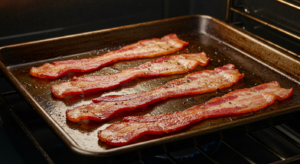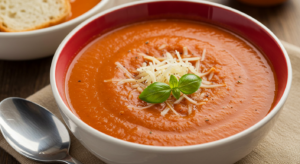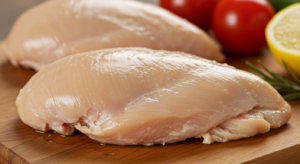
The Importance of Rinsing the Rice
Among the foremost steps to get the perfect rice is to rinse the rice. When cooking rice, it is always advisable to wash it before cooking. By doing this, you eliminate the excess starch that can make your rice clumpy. This is a crucial step especially when you desire fluffy rice.
Rinsing rice not only rids you of excess starch, but also any impurities that might linger from processing. While a single rinsing might be enough for certain types of rice, endowing your rice with a second or even a third rinse can ensure you get the ultimate in fluff and taste.
Understanding the Type of Rice You’re Cooking
The type of rice you’re cooking plays a prominent role in determining the rice to water ratio. Different types of rice demand distinct amounts of water in addition to diverse cooking times. For instance, brown rice customarily needs a greater amount of water and a longer cooking time than short grain rice.
Speaking of short grain rice, this variety often demands a one-to-one ratio of rice to water. In contrast, Basmati rice, a long grain rice, customarily calls for a one-and-a-half cups of water for every one cup of dry rice. Consequently, knowing the type of rice you’re cooking aids you in realizing how many cups of water to add.

Cooking Time and its Influence
The cooking time makes a huge difference in the final turnout of your rice. Over-cooked rice can be mushy and under-cooked rice can be hard. For example, white rice usually cooks relatively faster than brown rice. It could take up to 20 minutes for white rice, while brown rice may require up to 45 minutes to cook fully.
Cooking time can also be affected by the method of cooking. Are you using a rice cooker or are you more comfortable cooking your rice on the stove? Each method has its own peculiarities, with a rice cooker taking care of a lot of the variables for you.

The Secret to Fluffy Rice
The ultimate desire of every rice connoisseur is achieving fluffy rice. To do this, you need to refine your rice-to-water ratio and cooking time. To get fluffy Basmati rice, for instance, you ought to bring the water to a boil first before adding the rice. Also, don’t forget to wash off the excess starch.
Once your rice is cooked, let it rest a bit then fluff the rice with a fork. Why a fork, you ask? Well, the fork helps break up the grains without crushing them, ensuring that you end up with fluffy, separate grains.

Rice to Water Ratio: An Essential Tip
For a superior outcome, keeping a perfect rice to water ratio is key. A one-to-one and a half ratio works splendidly for long grain white rice. Half a cup more for each cup of brown rice. Kindly bear in mind that these ratios are for rice cooked on the stove. When using a rice cooker, stick to the manufacturer’s guidelines.
Heedfully measuring the cups of water and cups rice enhances the overall final product. By failing to get this ratio right, you can end up with poorly cooked rice or even burn the bottom of your pot.

How to Cook Brown Rice
To cook brown rice, the process is a little different from other types of rice. Brown rice has more fiber which makes it tougher than others. You start off by using cold water. Soak the rice in cold water for about 20 minutes to soften up.
Next, drain the rice and add fresh water for cooking purposes. The ideal ratio for brown rice is one cup of rice to two cups of water. Apply the simmer technique to cook it until all the water is absorbed.

Steps to Cook White Rice
When it comes to white rice, the process is simpler, making it a go-to option for many dinner tables. The preferred ratio is one cup of rice to one and a half cups of water. Like always, start by rinsing the rice to eliminate the excess starch.
Once the rice is washed, add it to the boiling water and drop the heat to a simmer. When all the water has been absorbed, fluff the rice with a fork. The result? Steaming, fluffy, perfect rice!

How to Serve and Eat Rice
After cooking the rice, it’s equally crucial to serve it properly and enjoy it the right way. Always fluff the rice with a fork prior to serving. This will stop the grains from sticking together.
Remember to be cautious while reheating leftover rice. You need to ensure it is steaming hot all the way through to avoid food poisoning. Rice can be coupled with a myriad of dishes, making it a highly versatile meal option.

The Significance of the Perfect Rice
Ultimately, the way you like your rice is up to you. Finding the perfect rice for you might take some experimenting. But the fundamentals to keep in mind include the rice to water ratio, the type of rice you’re cooking, and your cooking method. If you are disciplined enough to adhere to these principles, then the perfect plate of rice is within your reach!
1. Why should you rinse the rice?
Rinsing rice helps in removing the excess starch and impurities ferried during processing.
2. How much water should I use for cooking basmati rice?
For basmati rice, the usual ratio is 1.5 cups of water for every cup of rice.
3. What influences the cooking time of rice?
The type of rice and the cooking method chosen are the primary influencers on cooking time.
4. How to ensure a fluffy outcome when cooking rice?
To obtain fluffy rice, always ensure the rice-to-water ratio is accurate. Also, fluff the rice with a fork once cooked.
5. What is the ideal rice to water ratio?
The preferred rice to water ratio gravitates towards 1:1.5 for white rice and 1:2 for brown rice.
6. How differently should you cook brown rice?
Soaking brown rice in cold water for 20 minutes before cooking and then using fresh water can help achieve perfectly cooked brown rice.
7. What is a common mistake made while cooking rice on the stove?
One common mistake is not adhering to the right ratio of cups rice to cups of water which can interfere with the desired texture.
8. How would you fluff rice?
Use a fork to gently break up the grains after the rice is cooked to ensure fluffiness.
9. What are the advantages of using a rice cooker?
A rice cooker controls most of the cooking variables for you, such as timing and temperature, providing a more consistent result.
10. How do you serve rice?
Before serving, always fluff the rice with a fork to avoid clumps. It’s served alongside various accompaniments like gravies, stews, or stir-fries.








